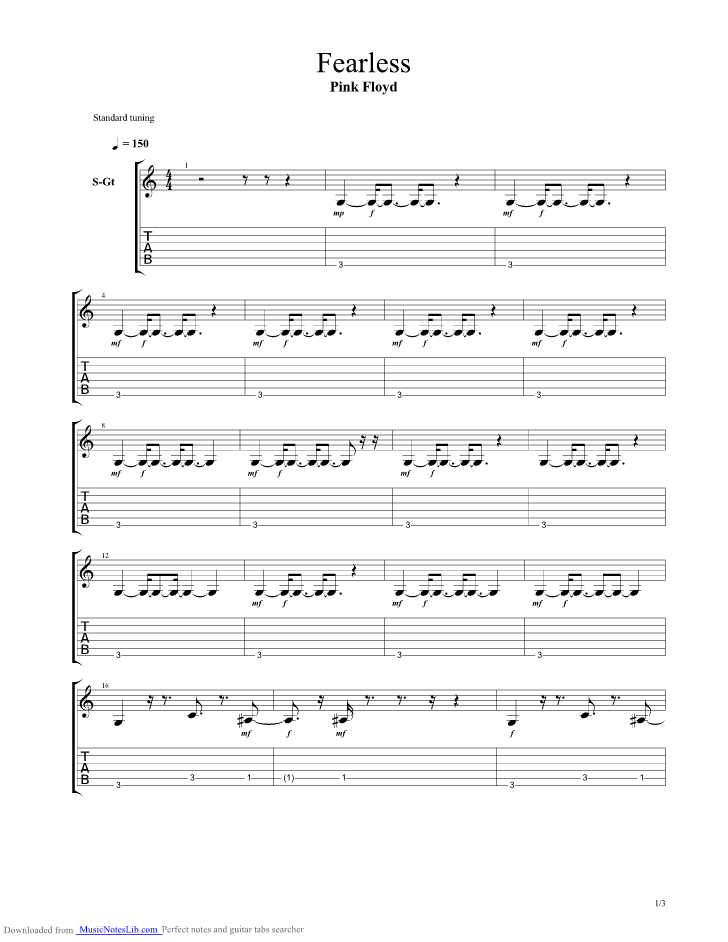

PINK FLOYD FEARLESS TV
Soon after the release of Pink Floyd’s debut album, 1967’s The Piper at the Gates of Dawn, he became withdrawn and erratic: He refused to participate in performances, sat unresponsive as people tried to talk to him, sabotaged a TV appearance by standing still when he was supposed to mime along to a backing track.
PINK FLOYD FEARLESS PROFESSIONAL
The members, a group of brainy misfits who’d assembled while attending university for art and architecture, mostly kept a professional distance from actual psychedelics-with the exception of Barrett, who indulged heartily. “Echoes”-and Meddle as a whole-sit at the intersection of these two approaches, offering a hazy preview of Pink Floyd’s future as international stars without yet abandoning their past as visionary young ruffians.įrom Pink Floyd’s founding in 1965 to Barrett’s ouster in 1968, they were the de facto house band of London’s nascent psychedelic scene. As their fame rose and bassist Roger Waters seized ever-tighter creative control across the ‘70s, the music increasingly favored solemnity over whimsy, formalism over exploration. During the late ’60s, under Barrett’s mad reign, Pink Floyd was turbulent and intuitive, balancing his fairytale songs with the sort of chaotic and noisy improvisations that presumably inspired Sonic Youth’s Kim Gordon to name her dog after him. It was the first song Pink Floyd completed for Meddle, their conflicted and brilliant sixth album.Īfter a period of flailing for direction, “Echoes” offered a path toward the populist art-rock epics that would make Pink Floyd one of the most successful bands in history. “Echoes” grew from that note into something awesome: a 23-minute psych-prog voyage from tranquility to triumph to desolation and back, with a riff like a lightning bolt striking open sea, and a pillowy lead vocal keeping you cozy and safe below deck.

So they used the demo tape, and began composing around it.

“We could never recreate the feeling of this note in the studio, especially the particular resonance between the piano and the Leslie,” drummer Nick Mason wrote later. It was piercing, but slightly obscured, as if it had traveled a great distance to reach your awareness. They called the results “Nothings 1-24”: Predictably, they were almost entirely unusable-except for this one note: a high B, played on a piano near the top of its range, warped by the undulations of a rotating Leslie speaker. They spent weeks improvising with each member isolated from what the others were playing-a harebrained search for the sort of strange and spontaneous inspiration that their old leader, guitarist and songwriter Syd Barrett, conjured freely.
PINK FLOYD FEARLESS FREE
Pink Floyd had no new songs prepared when they started recording in early 1971, but they did have access to the legendary Abbey Road Studios, and free rein from their label to mess around until they found their way. It was a single note, flickering out like a beacon to lead a wayward ship through the night.


 0 kommentar(er)
0 kommentar(er)
